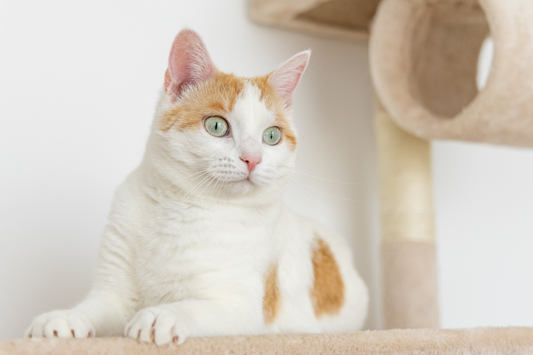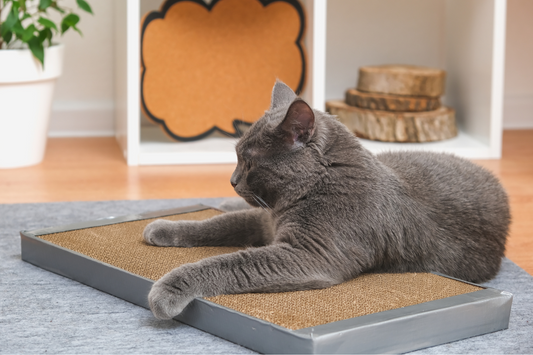
Cats are natural groomers, and scratching plays a critical role in their claw care. But do cat scratchers actually prevent overgrown claws? The answer lies in understanding how a cat’s claws grow and how scratchers prevent the overgrowth of claws
The Natural Claw Cycle
Cat claws are made of layers, and as the inner, sharper part grows, the outer sheath must shed. In the wild, this happens through climbing, hunting, and regular activity. Indoors, however, cats rely on scratchers to fulfill this instinctive behavior. Without a proper outlet, those outer layers don’t shed, leading to thick, curved, and potentially painful claws.
Signs of Overgrown Claws
1. Curled claws touching the paw pad
2. Clicking sounds when walking
3. Hesitation to jump or walk
4. Visible discomfort or limping
Risks of Overgrowth
Neglected claws can grow into the paw pad, leading to pain, infection, or even lameness. Overgrown nails can also snag on fabrics or carpets, increasing the risk of injury.
The Role of Scratchers in Claw Maintenance
Scratching acts like a natural shedding, helping remove dead nail sheaths and keeping claws sharp and clean.
1. Sisal scratchers: Durable and textured, ideal for shredding outer layers
2. Cardboard scratchers: Soft yet effective, often infused with catnip for added interest
3. Vertical posts: Great for stretching and full-body engagement
4. Horizontal scratchers: Preferred by cats who scratch low or sideways
How Often Do Cats Need to Scratch?
Daily scratching is normal and healthy. Cats often have preferred times, like after naps or meals. Ensure scratchers are placed in high-traffic or frequently used areas of your home.
When Scratching Isn't Enough
Some cats, especially seniors or less active breeds, may not scratch enough to maintain claw health. In such cases, gentle trimming every few weeks may still be necessary.
Final Thoughts: Preventative Care with Scratchers
A well-placed scratcher is more than a toy; it’s a tool for healthy claw maintenance. For best results, offer multiple scratchers in different materials and shapes. Regularly check your cat’s claws and consult a vet if you notice overgrowth, even with regular scratching.
By supporting your cat’s natural instincts, you’ll help avoid painful nail trims—and keep your furniture safer, too.











